
By Kirti Vashee@ SDL
Commercial feature
As outlined in a previous post, the global data explosion is creating new challenges for the legal industry that require balancing the use of emerging technologies and human resources in optimal ways to handle the data deluge effectively.
The continuing digital communication momentum and the much more rapid pace of internationalization today often create specialized legal challenges. The rapid increase in global business interactions, varying regulatory laws, business practices, and cultural customs of international partners and competitors are confounding and often frustrating to participants. The impact of all these concurrent trends is driving the volume of cross-border litigation up, and necessitates that corporate general counsel in global enterprises, and large law firms find the means to perform the critical functions related to manage the unique requirements of legal eDiscovery in these particular scenarios.
A Norton Rose Fulbright survey of litigation trends highlights the need for technology to enhance efficiency in legal departments, and also points out the growth of cybersecurity and data protection disputes increasing across all industries. Additionally, the survey states that increasingly international business operations lead to an increase in cross-border discovery and related data protection issues. The survey found that within the life sciences and healthcare and technology and innovation sectors the most concerning area is IP/Patent disputes. IP/Patent disputes are regarded as relatively costly in comparison to other legal matters, and technology and life sciences companies, in particular, face large exposure in this area.
By understanding the unique discovery requirements of different regions, instilling transparency and consistency throughout the discovery team and process, and taking advantage of powerful technology and workflow tools, companies can be better equipped to meet the discovery demands of litigation and regulatory investigations. The multilingual impact of this data deluge is just now being understood, and as we move to a global reality where the largest companies and markets in the globe are increasingly not English-speaking regions, the ability to handle huge volumes of flowing multilingual data becomes a way to build competitive advantage, and avoid becoming commercially irrelevant. Being able to handle large volumes of multilingual data effectively is a critical requirement for the modern enterprise.
What is eDiscovery?
Electronic discovery (sometimes known as e-discovery, eDiscovery, or e-Discovery) is the electronic aspect of identifying, collecting and producing electronically stored information (ESI) in response to a request for production in a lawsuit or internal corporate investigation. ESI includes, but is not limited to, emails, documents, presentations, databases, voicemail, audio and video files, social media content, and websites.
The processes and technologies around eDiscovery are often complex because of the sheer volume/variety of electronic data produced and stored. Additionally, unlike hard-copy evidence, electronic documents are more dynamic and often contain metadata such as time-date stamps, author and recipient information, and file properties. Preserving the original content and metadata for electronically stored information is required to eliminate claims of spoliation or tampering with evidence later in a litigation scenario.
EDiscovery is typically a culling process, of moving from unstructured to structured data – from unstructured data to matter specific relevance, and the highest value and most directly relevant information.
Thus, while there are three primary activities typically in eDiscovery, namely, collection, processing, and review, it is clear to practitioners and analysts that the review-related activity is the bulk of the cost of the overall eDiscovery process.
One analyst estimates that review-related software and services are estimated to constitute approximately 70% of worldwide eDiscovery software and services spending in 2018. While the percentage of spending for the eDiscovery task of review is estimated to decrease to around 65% of overall eDiscovery spending through 2023, the overall spend in dollars for eDiscovery review is estimated to grow to $12.15B by 2023.
A respected RAND Institute study is even more explicit about the costs and shows very clearly that managing your data volume is critical to managing your costs. The Rand Institute for Civil Justice estimates that the per-gigabyte costs break down to $125 to $6,700 for collection, $600 to $6,000 for processing, and, in the most expensive stage, $1,800 to $210,000 for review. The costs for multilingual review are very likely even higher and by some estimates could be as much as 3X times higher.
“The RAND Institute for Civil Justice has estimated that each gigabyte of data reviewed costs a company approximately $18,000.”
This means that a conscientious, defensible, proactive approach to information governance can lead to tremendous savings. Every gigabyte of outdated unnecessary ESI that you delete in following a uniform data destruction policy saves you, on average, $18,000 per case.
What is document review?
Also known simply as review, document review is the stage of the EDRM in which organizations examine documents connected to a litigation matter to determine if they are relevant, responsive, or privileged. The value of having robust information governance policies in place makes the overall process both more effective and more efficient. Due to outsourcing and the high cost of using lawyers, document review is the most expensive stage of eDiscovery. It is generally responsible for 70% or more of the total cost of eDiscovery.
The cost per hour for document review attorneys to review documents during the review phase of eDiscovery is one of the most expensive steps in the overall process, something which is only further exacerbated when the attorneys have to be bilingual at a high level of proficiency.
Bilingual attorneys are the most costly element of the discovery phase in litigation.
To control those extravagant costs, litigants strive to narrow the field of documents that they must review. The processing stage of eDiscovery is intended in large part to eliminate redundant information and to organize the remaining information for efficient, cost-effective document review. Technology that assists in the culling and closer examination process is essential, and we see that eDiscovery platforms that assist professional services, law firms and information technology organizations to find, store, review and create legal documents are increasingly pervasive.
Document review can be used in more than just legal eDiscovery for litigation. It may also be used in regulatory investigations, internal investigations, and due diligence assessments for mergers and acquisitions and other information governance-related activities. Wherever it is employed, it serves the same purpose of designating information for production and requires a similar approach.
The SDL Multilingual eDiscovery process
It is possible to identify the key steps involved in a typical multilingual eDiscovery use case where the key objective is to extract the most relevant information form a large volume of submitted material. The multilingual characteristics of much of the data that needs to be reviewed today adds a significant layer of complexity and additional cost to the process.
The typical process involves the following key steps:
- Text Extraction: It is often necessary to extract multilingual text from scanned documents to ensure that all relevant documents are identified and sent to review. SDL has leading-edge OCR technology and native file processing technology to enable an enterprise to do this at scale. Sometimes it is also required to extract text from audio.
- Automated Language Identification Processing: SDL’s Linguistic AI technology capabilities make automatic detection of languages and data sets within any content an efficient and highly automated process.
- Multilingual Search Term Optimization: SDL linguists work together with MT experts to generate critical search and terminology to ensure that multilingual data goes through optimal discovery related processing. This ensures that high volume automatic translations get critical terminology correct, and also enables the most relevant foreign language data to be discovered and presented for timely review. The multilingual search term consultant’s understanding of linguistic and cultural nuances can mean the difference between capturing critical information and missing it completely. SDL linguists ensure that grammatical, linguistic and cultural issues are taken into consideration during search term list development.
- Secure Translation Management Infrastructure: SDL’s multilingual eDiscovery solution connects the SDL MultiTrans® Translation Management System (TMS) to Relativity®, a popular eDiscovery cloud solution for case management. We will continue to expand our connectivity to other information governance and discovery tools as per market demands. The connection between the two platforms helps legal professionals and internal investigators to quickly navigate and classify foreign language documents, and seamlessly request specialized human language translation services when they deal with multilingual assets. Translate large volumes of documents in a fraction of the time. SDL MultiTrans is secured using certified SSL technology, and on premise solutions to ensure the data never leaves the corporate network, preventing information leaks. SDL MultiTrans is a leading translation management system, securely streamlining and enhancing every aspect of an organization’s translation and localization process, and allowing project managers and translators to complete projects faster, far more efficiently, and to the highest standards.
- Secure, Private, State-of-the-Art Machine Translation: SDL is a leader in developing secure, private, scalable enterprise-ready MT technology that can be deployed on premise or in the private cloud, and related expert services. SDL’s MT technology is used by the largest global enterprises in the world, as well as many governmental agencies focused on national security and intelligence gathering activities. Our partnership with Relativity (and other eDiscovery platforms) makes it easy for companies to handle anything related to large corporate legal matters, from analyzing and translating millions of documents to preparing critical contracts and court-presentable documents.
- Specialized Human Translation Services: SDL provides an around-the-clock, around-the-world service using state-of-the-art linguistic AI tools to ensure greater accuracy, security, reduced costs and turnaround time. The company has a pool of certified and specialized translators across multiple jurisdictions and languages worldwide who have expertise and competence across a wide range of legal documents. The company is already working with 19 of the top 20 law firms in the world. The translation supply chain is often the hidden weak spot in an organization’s data compliance. SDL’s secure translation supply chain gives you fully auditable, data custody of your translation processes and can be cascaded down through your outside counsel and consultants to create a replicable process across all of your legal service partners.
SDL’s translation capabilities range from handling large eDiscovery litigation related projects using a combination of MT enhanced with expert developed client-specific glossaries and search terms to improve the ability to identify relevant documents, no matter the language. SDL’s secure translation supply chain solution provides an enterprise-class, vendor agnostic, secure translation platform that allows you to combine regulatory compliance and translation best practice. Powered by SDL’s leading linguistic technologies your organization benefits from consistently applied terminology, your teams have full visibility of spend and leverage, and can easily flex your approved supplier pool to meet your needs. Securing the translation supply chain needn’t come at the cost of trusted suppliers, existing relationships or impact time to market.
To find out how SDL can support your multilingual eDiscovery-related data processing and translation strategy, please visit our multilingual eDiscovery pages, which will provide more insight on what we can do for you. To find out more about the Relativity end-to-end translation solutions capabilities look here, or watch this short video to learn more about how SDL can help.
W: https://www.sdl.com/industries/legal-solutions/
*About the author:
Kirti Vashee is a language technology evangelist at SDL who was formerly an independent consultant focusing on machine translation (MT) and translation technology.


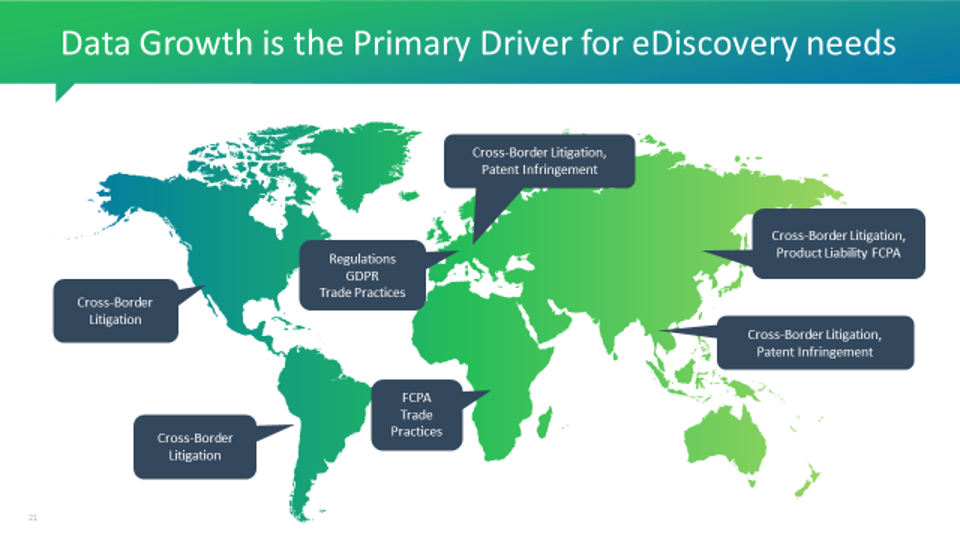
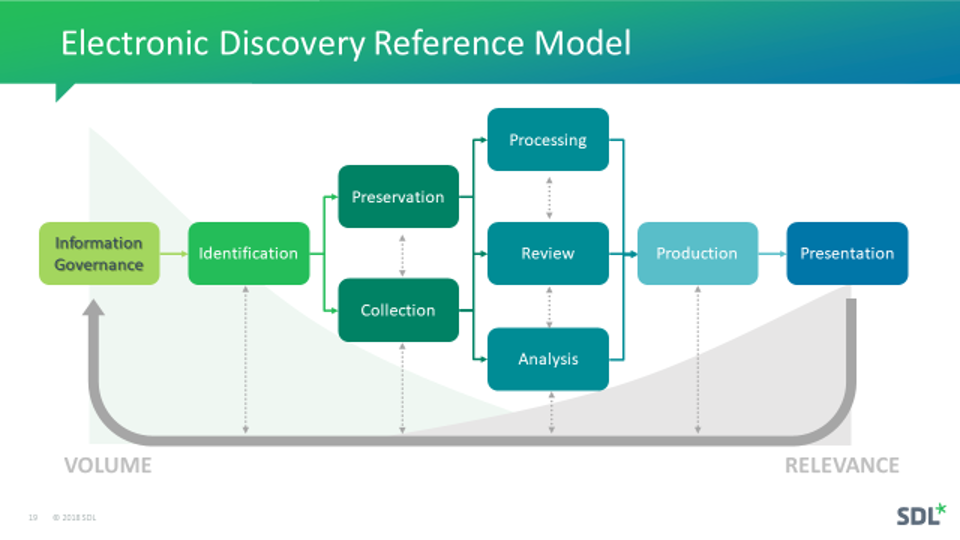
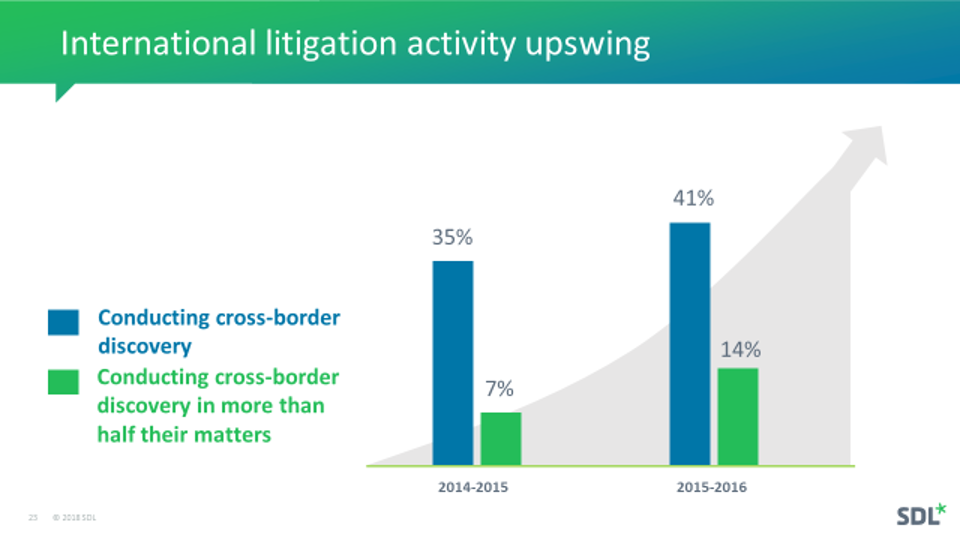
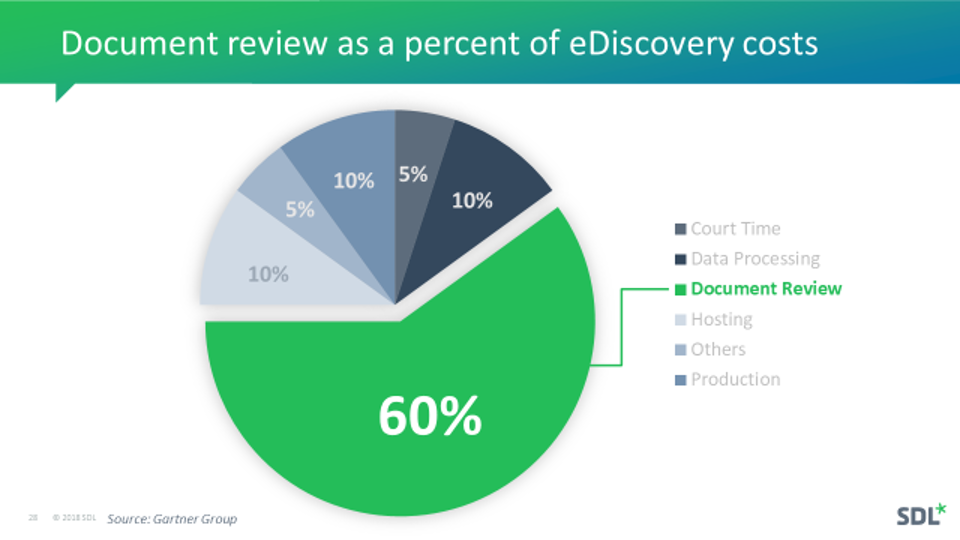
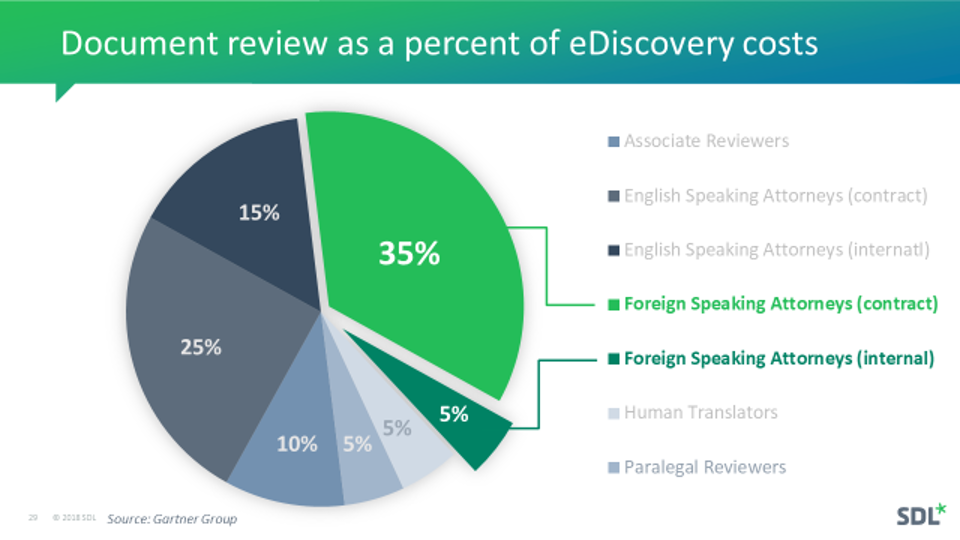
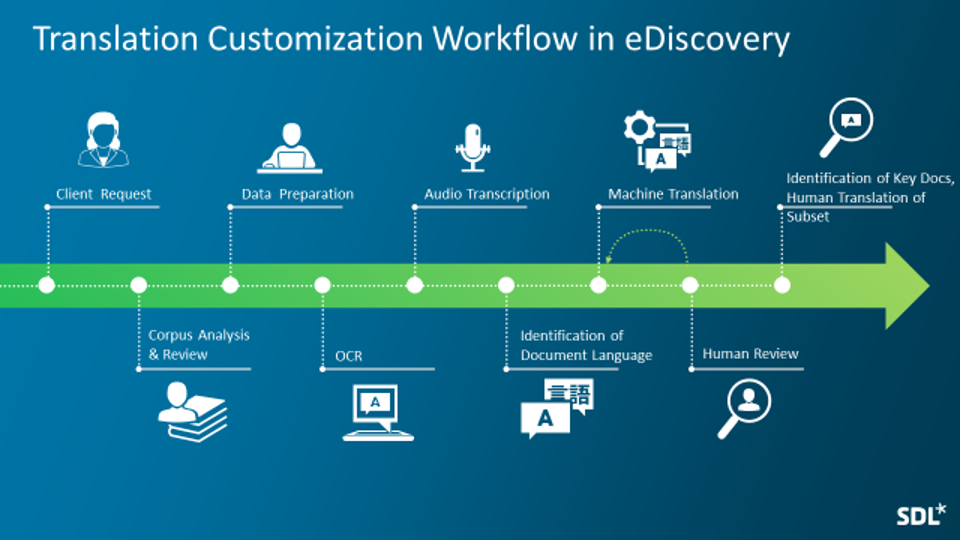
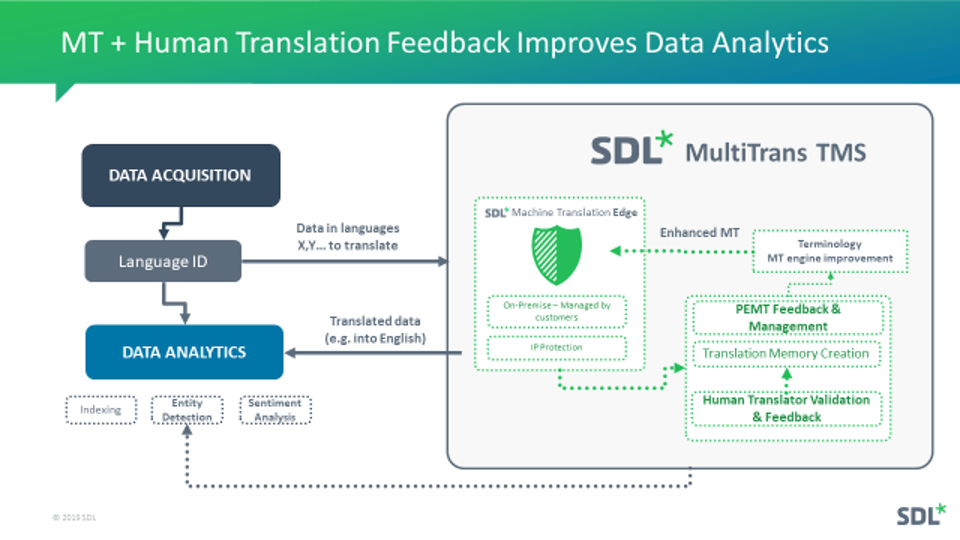









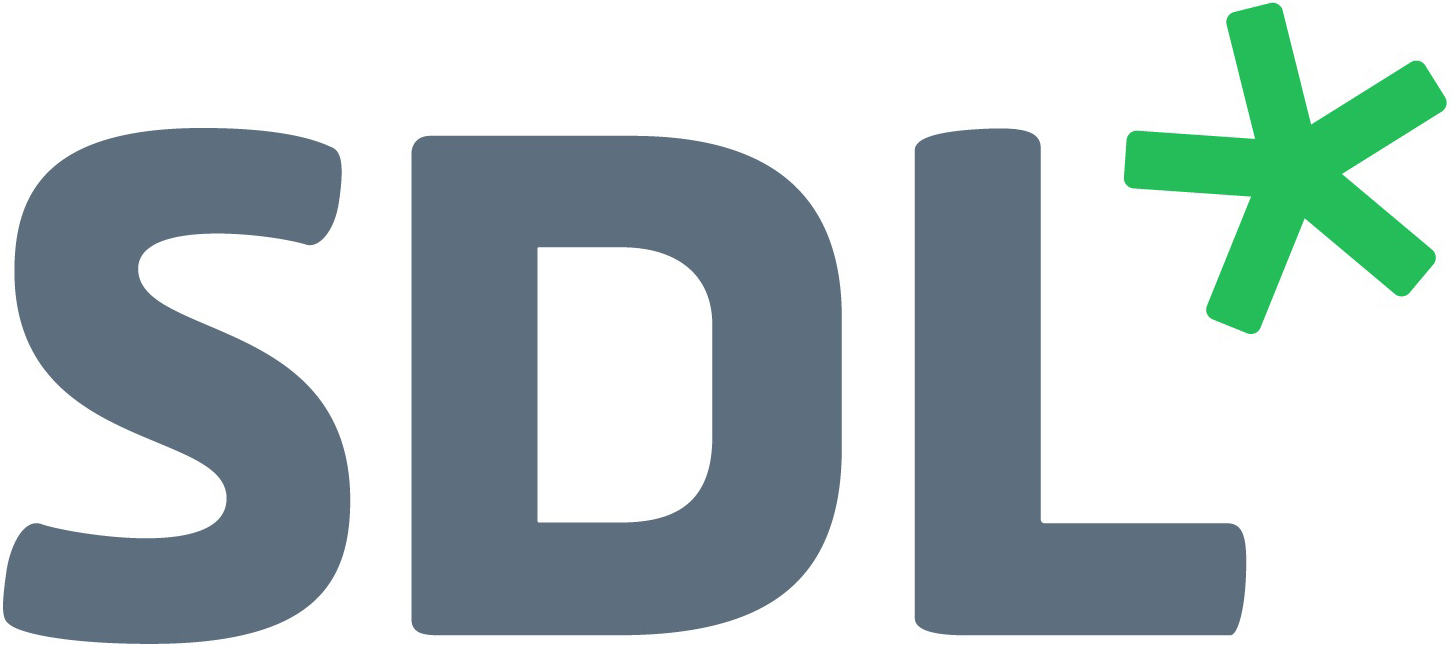 SDL
SDL Christy Ma
Christy Ma Bertram Chen
Bertram Chen






